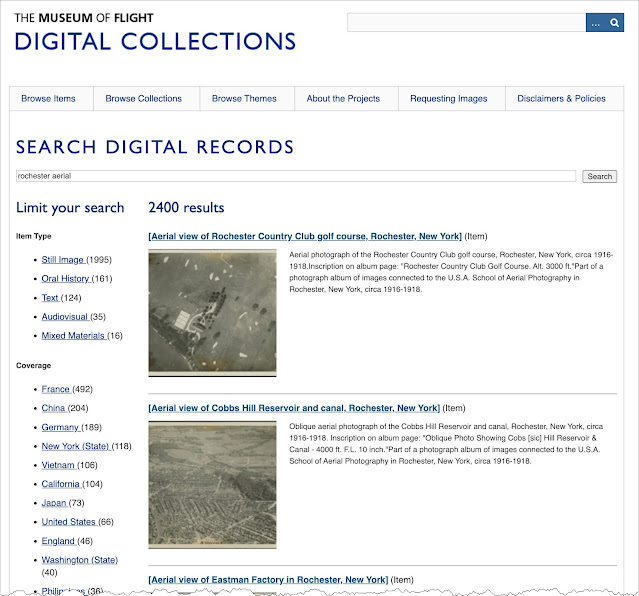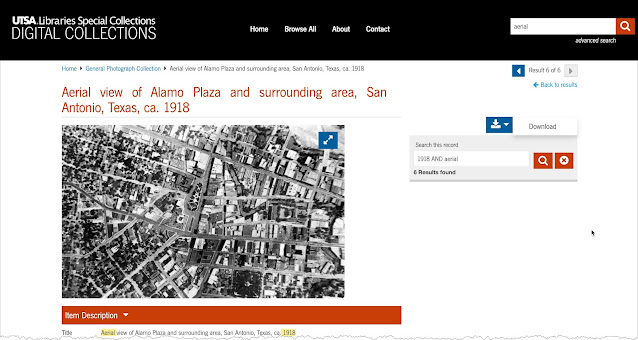It can be just too much fun...
... and that's been the case here.
It's fairly easy to answer the Challenge overtly, but looking up one thing leads inevitably to another in a chain of curious questions. It's not ratholing, exactly, but I have spent an awful lot of time looking into this question.
Here's last week's Challenge:
1. I want to know if I NOW live near any Native American shellmounds. (By "near," I mean within 5 miles / 8km.) Can you find a map that shows an extensive set of shellmounds in the SF Bay Area? Are any of those near Mountain View, CA? (Extra credit: Can you find any images of the nearest shellmounds?)
The fast answer to this is to do a search like:
[ map shellmound San Francisco California ]
and you'll find the Shellmound.org website, which has a lovely series of maps documenting the changes to the West Berkeley shellmound over the years. On that site we read:
"The archaeological site is officially known by the number CA-ALA-307, because archaeologist Nels Nelson gave the West Berkeley Shellmound #307 when he mapped 425 shellmounds around San Francisco Bay in 1904."
That sounds like a map we need to find.
Luckily, the second hit is a link to a Wikimedia map, labeled "Map of San Francisco Bay Area Showing Distribution of Shell Heaps." Shell heaps is a synonym for Shellmound. Following the links back, you'll find this map is from Nelson, Nels Christian. Shellmounds of the San Francisco Bay Region, Vol. 7. No. 4. University Press, 1909.
This is the lower right corner of the map on page 349 where you can see:
See that entry for Mountain View (bottom center), with the town of Palo Alto just above Mayfield? Just above Mountain View is "CASTRO," next to the long line indicating a railroad. Just above CASTRO is a dot labeled 356. Following the convention in the Shellmound.org site for labeling archaeological sites, we might try a search for "CA-SCL-356" and see what happens.
(Why SCL? Because in the site code above, the ALA refers to "Alameda" county. Mountain View, Palo Alto, and CASTRO are all in Santa Clara county. Hence the 3-letter acronym SCL. These codes are known as Smithsonian trinomials. Most historic sites in the US have a trinomial.)
So, let's guess that this is the naming convention for archaeological sites in California and search for:
[ "CA-SCL-356" ]
This leads us quickly to the Cooley Landing: Cultural Resource Inventory and Assessment with this map in it:
 |
The southern part of San Francisco Bay, showing major shellmounds in the area.
This is a modified version of the map in the Cooley Landing report SMA-77 is
fairly near the Cooley Landing site. (after Hylkema, 1991) |
The "Cooley Landing" report is an cultural resource assessment and inventory that's done before any major construction project can take place. Such reports have been required ever since the passage of the National Environmental Policy Act in 1969. Before tearing up the place, the project has to write a comprehensive "cultural assessment" covering Native American places and artifacts.
Such reports often have an impressive amount of detail about things like village sites, archaeological resources, and things like shellmounds. In the Cooley Landing report we read that:
"Between 1909 and 1912, Lewellyn Loud from the University of California at Berkeley surveyed the South Bay and plotted the locations of many mound sites including clusters of them within, and adjacent to the project area. In 1912, Loud tested one such mound, SCL-1 (also known as the Ponce and Castro Mound and formerly designated by Nelson as SCL-356 in the City of Mountain View). This site was located within three miles of the current project location... It was noted that the mound was 8 feet high and broader than a football field." Cooley Landing report
So now we know about a shellmound also known as the Castro Mound and another mound known as the Ponce mound (SCL-1).
A quick search for:
[ Castro shell mound ]
takes us to the Wikipedia page for the Monta Loma neighborhood in Mountain View, which also tells us that the Castro shellmound was there, reportedly 400 feet long, by 300 feet wide, and 10 feet high. (121 m long, by 100 m wide, by 3.3 m high)
I thought it would be nice to find an image of the mounds. I searched a nice archive of Mountain View historic photos (hosted by library), but don't find anything. The town to the north is Palo Alto, so I thought I should try that. Sure enough, a search for
[ Palo Alto historic photos ]
leads to the Palo Alto Historical Association digital photo collection. In that interface I searched for [mound], [shellmound], and find that both of those searches fail.
However, adding the term INDIAN to the search--[Indian mound]--leads to the "Aerial view of Indian Mound" Shown below:
 |
Castro Shellmound (CA-SCL-356) P/C Palo Alto Historical Association,
Guy Miller photo collection. (Ca. 1941) |
Footnote: Yes, I know the term "Indian" isn't politically correct, but it IS the index term of art. Perhaps eventually all of the indexes in the world will be updated, but if you want to find something, you have to adopt the terminology that's in use in the database.
This was fairly successful, but I thought perhaps I could find an aerial photo of the area of SCL-1 and SCL-356 at the Stanford Earth Sciences library. There, with the help of their incredibly energetic and wonderfully helpful Map Librarian Zoe Dilles I was able to locate a few hundred photos, both in hardcopy prints, and at the UC Santa Barbara Collection called FrameFinder. With Zoe's help I was able to dig deep in to the aerial photo archive and find a few images that come close, but are not quite high enough resolution to definitively pin down the location.
 |
| The Monta Loma neighborhood. April 1, 1948. Flight CDF5, Frame 2-83 |
I spent several happy hours looking through the various "flights" of aerial imagery that was from the late 1940s, I wasn't able to find anything that was obviously correct. The shellmounds are in the above image, but it's hard to find them just visually. (I think I see them, but it's a tough one to validate.)
So... the bottom line here is that YES, there are several shellmounds in the Mountain View / Palo Alto area. In fact, within a 10km (6.2 mile) radius of my house, I was able to identify at least 7 different shellmounds, none of which have any above-ground presence.
Another helpful article in this search was There were once more than 425 shellmounds in the Bay Area. Where did they all go? The short answer is that they were mined for the quality of the soil and/or for the artifacts within them. (Turns out that giant piles of shells turn into high quality fertilizer over the years.)
2. A big part of my family hails from the area around Rice Lake, WI. Are there any Native American mound structures there? If so, where?
This wasn't hard either:
[ Rice Lake Wisconsin mounds ]
quickly leads you to the Wisconsin First Nation's Rice Lake Mound group. As they say on their web page,
"The group once consisted of fifty-one conical burial mounds, apparently built after about a.d. 500. Some mounds were excavated in the nineteenth century by the Smithsonian Institution during its search for the identity of the mound builders, while others were excavated in the 1950s. Many were obliterated by city expansion."
This has been, unfortunately, the fate of many mounds over the years. But it is a lovely park:
I have to say that I spent probably 30 hours on this Challenge... it was just WAAY too interesting. The more I searched, the more I found. I went to a couple of different museums and archives in doing this research--maybe I'll get around to telling you those stories another day.
The thing that impressed me the most is exactly how much material is still available online, if you search across different resources. We've talked before about how using multiple sources is a way to both triangulate AND to inform mutual lines of research.
I didn't mention it here, but I also found that looking through archives of old newspapers (primarily Newspapers.com) was incredibly valuable for getting the same information in slightly different ways. It's also fascinating to see what the reporting was like back in the day. An article from the March 31, 1909 Peninsula Times Tribune (page 6) reports that "..“the Ponce, Huff, Rengstorff, Abelee, Crittenden, Farell, Somers, and Ynigo ranches all contain mounds.... Sanborn ranch had artifacts. Ynigo was granted Rancho Posolomi, aka Rancho Yñigo. Posolmi village was the name of the village..." that was there before the Europeans moved in.
The Ynigo ranch folks found "... mortars, sorcery stones, bone combs, abalone money, skeletons, hatchets, mussel, oyster, clam and small birds..." And, of course, arrowheads.
In another article I found that at the location of the current Google X building, when the area was still being worked for initial construction in the 1960s, local boys could collect arrowheads and bits of pottery--things that were mostly taken home for personal displays.
That was then. Today, these are mostly invisible. Some have been returned to the local First Nation tribes, but many, many things have vanished into the mists of history.
SearchResearch Lessons
1. When you see codes that are meaningful, figure out what they are so you can use them too. In this case, the Smithsonian trinomials are incredibly useful for finding inventories and assessments of cultural artifacts. Learn what those codes are and use them.
2. Look for maps. People LOVE to make maps. By searching for maps of cultural sites (esp. shellmounds), I was able to find a lot of shellmound locations that I hadn't expected.
3. Keep in mind that your search terms might not be their search terms. I started with shellmounds, but learned later that people often index them until "shell mounds" or "middens" or "shell heaps"... etc. Similarly, if they use a term like "Indian" (especially in historical contexts), you'll have to use the terminology that they used to use, even if it's not what we would say today. Put your mind back into their time and use the words they'd use. (Remember we've talked about this before! Effective searching with old terms.)
Keep Searching!




















